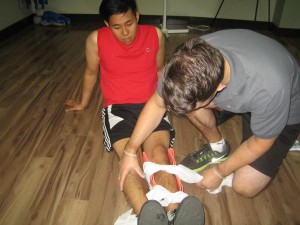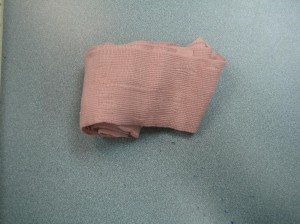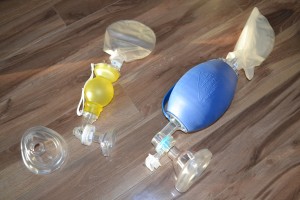
Grande Prairie First Aid is a training service provider of first aid and cardiopulmonary resuscitation (CPR) in Alberta. Offering quality training programs for cheap course rates and flexible schedules have made Grande Prairie First Aid the most popular training service provider in the area. Recertification and private programs are also offered at by St Mark James certified instructors.
A complete list of offered classes can be found on the Grande Prairie First Aid website, as well as an on-line registration form. Other ways to complete enrolment include telephone calls, walk-ins, and e-mails.
Grande Prairie First Aid offers the cheapest rates in Alberta.

Course fees at Grande Prairie First Aid are paid in full during enrolment so students don’t have to worry about expenses while training. The rates include taxes, certificates, St Mark James registration fees, and training manuals. Full refunds are given to students who are able to provide 72-hour notices before dropping out.
Quality programs are taught by St Mark James certified instructors.
First aid training programs focus on the EMS (emergency medical services) system. Students learn how to perform wound care, addressing injuries that compromise breathing and circulation, and cardiopulmonary resuscitation (CPR) and automated external defibrillation (AED). Full first aid progams are 14-16 hours long.
Students are required to have complete attendance, at least 75 percent on the written exam, and good skill demonstration to pass a training program.
Stand-alone First Aid and CPR Courses in Grande Prairie are also available

Students can choose from three levels of CPR training: A, C, and HCP. All levels include basic first aid and AED training but CPR-only classes can also be taken. Each stand-alone class is 4, 5, and 6 hours long respectively.
Private instructors are offered with hourly rates.
Students who want to book private training at home or for special events like conferences or outings can book instructors at Grande Prairie First Aid. They have hourly rates and schedules so just send an e-mail or give a call to inquire about them.
Students receive certificate cards after passing a class of First Aid and CPR Courses in Grande Prairie
Certificate cards from St Mark James are awarded upon completion of a program. Wall mount sized certificates are also available. Certificates are valid for three years, renewable through recertification programs. First aid recertification training is 8 hours long, held twice weekly, and includes CPR level C recertification.
Did You Know?
Gastroenteritis
Gastroenteritis – meaning inflammation of the gastrointestinal tract – can usually be traced to viruses, poor preparation of food, and side effects from medication. They are usually self-limiting and the symptoms are relieved in a few days. Common signs and symptoms are:
- Nausea
- Vomiting
- Diarrhoea
- Abdominal cramps
- Low-grade fever
Enrol in a training program to learn more about gastroenteritis!